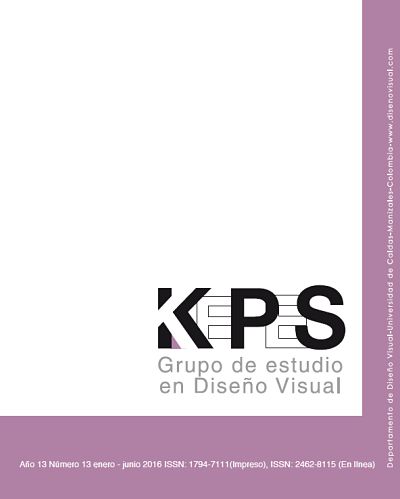Autores/as
Resumen
Mobile First no es solo un concepto fruto de la mercadotecnia, pues hasta la UNESCO invita a que se exploren las posibilidades educativas del móvil o celular dentro y fuera del aula. Internet móvil, internet de las cosas, geolocalización y sensores de dispositivos móviles configuran una nueva convergencia de medios marcada por la movilidad de persona y aparato. Esta movilidad, además de interactividades (relaciones con intermediación tecnológica), característica de los sistemas estáticos, genera relaciones analógicas debido a las interacciones (relaciones físicas y personales) con el propio usuario, con otras personas y con el binomio espacio-tiempo. Esta movilidad es protagonista en los procesos de diseño y creación transmedia. Diseñadores, creadores y desarrolladores de contenidos y de software tienen que pensar primeramente en este dispositivo (Mobile Firts) y en que sus creaciones se adapten al resto de pantallas (Responsive Web Design). La hipótesis es que el hipermedia móvil se está configurando como un nuevo medio que suele ser el protagonista principal en la creación transmedia. Se plantea así una aproximación taxonómica, narrativa, creativa y ludoeducomunicativa que intenta demostrarlo. Se analizan las posibilidades hipermedia de la comunicación móvil y sus roles en la comunicación transmedia. Se recurre a la prospectiva para señalar las carencias del momento y apuntar posibilidades futuras que nacen de necesidades no cubiertas. El marketing se encarga de potenciar el deslumbramiento tecnológico. Desde la academia es necesaria una mirada rigurosa centrada en el diseño, en los contenidos y en la accesibilidad de manera que ayude a pasar de una tecnología que deslumbra a una tecnología que alumbre el conocimiento.
Palabras clave
Citas
________. (2013). Integración de GIS (sistemas de georreferenciación de la información) y localización espacial en prácticas pedagógicas y lúdicas vinculadas a museos. Arte, individuo y sociedad, v. (25), 121-134 (http://goo.gl/h74QeI).
Beranuy, C. et al. (2009). Validación de dos escalas breves para evaluar la adicción a Internet y el abuso de móvil. Psicothema,v. 21, núm. 3, 480-485 (http://goo.gl/JKf4HT).
Bush, V. (1945). “As We May Think”. The Atlantic, July 1, 1-8. (http://goo.gl/CkfceA).
Butlewski, M. et al. (2014). Heuristics in Ergonomic Design of Portable Control Devices for the Elderley. En: Stephanidis, C. y Antona, M. (Eds). Universal Access in Human-Computer Interaction: Aging an Assistive Environment. Heidelberg: Springer.
Calvi, J. (2010). La reconfiguración del campo cultural. Lógicas sociales de creación y circulación del audiovisual en Internet. Telos, 85, 45-52. (http://goo.gl/RP7jcr).
Cangiano, S. y Fornari, D. (2014). Products as platforms: a framework for designing open source interactive artifacts. En: Proceedings of the 2014 Companion Publication on Designing interactive systems (DIS Companion ‘14),219-222. (http://goo.gl/CgxmgX)
Davenport, G. (2015). Interactive cinema. MIT Medialab (http://goo.gl/0HkSqt).
Ditrendia (2015) (http://goo.gl/BD8Zun) .
Epstein, M. (2016). Walking cinema. En: Museum I+D+C (2016). Glosario Social Expandido (https://goo.gl/rsQ0Ks).
Gómez Alzate, A. (2015). Modelo de Diseño para la valoración y apropiación social del Patrimonio en el Paisaje Cultural Cafetero Colombiano. Kepes, año 11, núm. 11 enero-junio, 117-138. DOI: 10.17151/kepes.
Grassi, A., Gagglioli, A. y Riva, G. (2009). The green valley: the use of mobile narratives for reducing stress in commuters. Cyberspsychology. Behavior and Social Networking, April, num. 12, v. 2, 155-161. (http://goo.gl/j6GNvA).
Hudson-Smith, A. et. al. (2012). Experiments with the internet of things in museum space: QRator. En: Proceedings of the 2012 ACM Conference on Ubiquitous Computing (UbiComp ‘12),1183-1184. (http://goo.gl/MZzzyK).
Lizuka, T. (2007). An Empirical Analysis of Planned Obsolescense. Journal of Exonomics & Management Strategy, January, v. 16, num. 1, 191-226. (http://goo.gl/PzFBAH).
Ladly, M.; Ludlow, B. y Buzio, G. (2014). People, places and things: a mobile locative mapping workshops. En: Proceedings of the 16th international conference on Human-computer interaction with mobile devices & services (MobileHCI ‘14),569-572 (http://goo.gl/3ea7Mq).
Landow, G. P. (2006). Hypertext 3.0. Critical Theory and New Media in an Era of Globalization. Maryland, USA: The Johns Hopkins University Press.
Lemos, A. (2010). “Post-Mass Media Functions, Locative Media, and Informational Territories: New Ways of Thinking About Territory, Place, and Mobility in Contemporary Society”. Space and Culture, November, v. 13, núm. 4, 403-420. (http://goo.gl/3ea7Mq).
Logan, R. K. (2010). Understanding New Media: Extending Marshall McLuhan. New York: Peter Lang Publishing.
Moreno Sánchez, I. (2015). Interactividad, interacción y accesibilidad en el museo transmedia. Zer, Vol. 20, núm. 38, 87-107. (http://goo.gl/yVAsUA).
Moreno Sánchez, I. y Navarro Newball, A. A. (2015). La ciudad escondida. Toledo, laboratorio de comunicación transmedia. Opción, año 31, núm. 1, 806-827 (http://goo.gl/ayOPZB).
Moreno Sánchez, I y Navarro Newball, A. A. (2013). Comunicación cultural y TIC: La representación accesible de la cultura Chimú. Historia y Comunicación Social. Vol. 18, octubre, pp. 541-554. DOI: http://dx.doi.org/10.5209/rev_HICS.2013.v18.43987
Nagler, S.; Hicks, A. et. al. (2014). Narratives: geolocative cinema application. En: Proceedings of the 16th international conference on Human-computer interaction with mobile devices & services (MobileHCI ‘14), 593-595. (http://goo.gl/JF92LD).
Perea Tanaka, C. Moreno Sánchez, I. et. al. (2015). Towards tantalluc: interactive mobile augmented reality application for the Museo de América de Madrid. Computing Colombia Conference, IEEE Xplore (http://goo.gl/K8fVVi).
Rico, J. (2010). Usable Gestures for Mobile Interfaces: Evaluating Social Acceptability. En: CHI´10 Proceedings of the SIGCHI Conference on Human Factors in Computing Systems, 887-896(http://goo.gl/Arh3iz).
Rifkin, J. (2014). The Zero Marginal Cost Society: The Internet of Things, the Collaborative Commons, and the Eclipse of Capitalism. New York: Palgrave Macmillan.
Santoso, M. y Gook, L. B. (2012). ARobot: development of 3rd person shooting game and handheld augmented reality. En: Proceedings of the 11th ACM SIGGRAPH International Conference on Virtual-Reality Continuum and its Applications in Industry (VRCAI ‘12),55-58. (http://goo.gl/Kw6pFR) (23-02-2016).
Schmandt, C. (2016). Living Mobile (http://goo.gl/tHt5pC).
Siapera, E. (2012). Undestanding New Media. Londres: SAGE.
Townsend, A. (2006). Locative-media Artists in the Contested-Aware City”. Leonardo, v. 39, num. 4, 345-347(http://goo.gl/3ZwOSk).
Tuters, M. y Varnelis, K. (2006). Beyond Locative Media: Giving Shape to the Internet Thing. Leonardo, August, v. 39, núm. 4, 357-363.

 pdf
pdf
 FLIP
FLIP






















